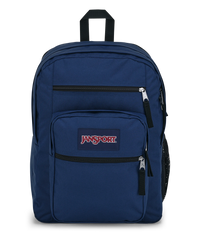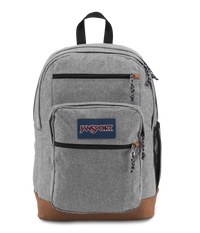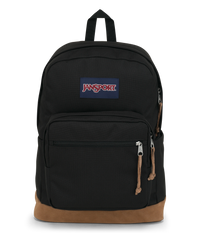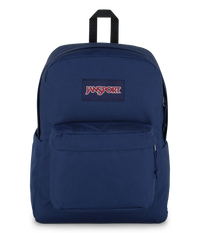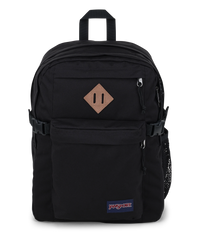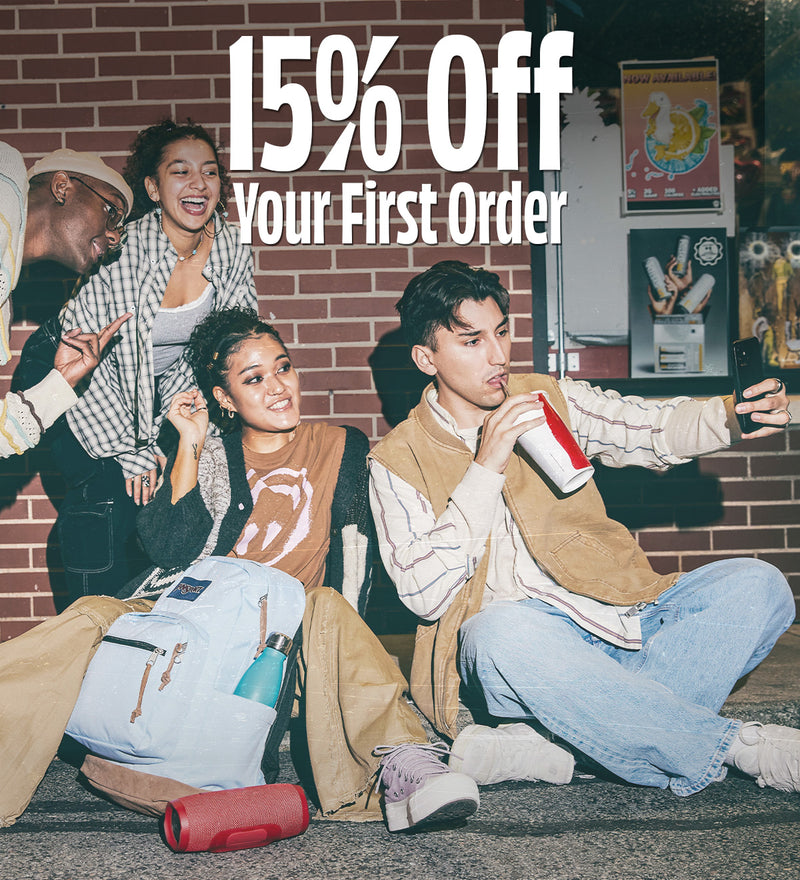The Future is Accessible Why Adaptive Approaches Matter
As a person with a disability, I carry a lot with me every single day. Now I don’t have to worry about adapting my backpacks with JanSport’s new adaptive backpack collection.
If you have a disability or know someone with a disability, then you probably know about adapting and overcoming all too well. In order to function, we need to make adjustments. For instance, I am typing this article with a pen right now. My hands no longer open all the way and I have a limited range of motion in my arms. Because of this, I have learned how to type with two fingers on my right hand and a pen in my left hand.
People with disabilities are some of the most resilient people I know, but finding adaptations and quick fixes every step of the way can get exhausting. This is because, for the majority of history, disabled people have come up with these solutions and adaptations by themselves or with the help of a loved one. We want and deserve to live life to the fullest. Unfortunately, our built world was not made with people with disabilities in mind. Now that we have mostly equal access to buildings, we are fighting for accessibility and equity in other areas.
Adaptive Solutions
I’m so lucky to live in a time of accessibility improvements. JanSport has made positive changes in the fashion industry by releasing a collection of adaptive backpacks—perfect for a variety of mobility devices. Perfecting these designs through years of collaboration with the disability community, the Central Adaptive collection has been created with functionality and accessibility in mind.
I tried both the Central Adaptive Backpack for a power wheelchair and the Central Adaptive Crossbody, and let me just say, this collection is changing the game. Previously, I had to use the biggest possible backpacks so I could carry all of my school and medical supplies. This resulted in a bulging backpack that sometimes made it difficult to maneuver my wheelchair. Now I can use a smaller backpack for my school supplies because I can use the adaptive crossbody bag for my medical supplies. In the past, I only had storage on the back of my chair—where it’s completely inaccessible to me, so now I can attach the crossbody to the side of my chair and grab what I need easily. They’re also secured to my chair better with extra straps, loops, and hooks to attach to every type of mobility device securely. It’s the little details that make such a big difference.
A backpack is something that many people probably take for granted. I know I have. And, while a backpack can’t solve all of my problems, it did make it easier to maneuver my wheelchair and fit into small spaces. It’s one less thing I have to worry about. If something like a backpack can change people’s lives this much, imagine what larger-scale, societal changes could do.
Equality Matters
Judy Heumann is my biggest role model. Born in 1947, she was diagnosed with polio when she was just 18 months old, and went on to become a disability rights activist. She helped to pass the most monumental disability rights legislation through extreme acts of political activism. She once said; “The truth is, the status quo loves to say no. It is the easiest thing in the world to say no, especially in the world of business and finance. But for the first time, we were discussing civil rights, and no other civil rights issue has ever been questioned because of the cost.”
JanSport has proved to be part of that positive narrative. An adaptive backpack line shows that disabled people are worth the investment.
We definitely have a way to go in the world of diversity, equity, and inclusion, but I’m happy to see some of it unfolding before my eyes. Taking another quote from Judy Heumann; “Change never happens at the pace we think it should. It happens over years of people joining together, strategizing, sharing, and pulling all the levers they possibly can. Gradually, excruciatingly slowly, things start to happen, and then suddenly, seemingly out of the blue, something will tip.”
I want to share a few disability progress points that I hope to see in the next decade.
The World Health Organization (WHO) estimates that 16% of the world's population lives with a disability. But this isn’t being represented by what we see in the media. In 2022, the Gay & Lesbian Alliance Against Defamation (GLAAD) found that 1.8% of recurring TV show characters have a disability. And, 95% of those disabled characters are played by nondisabled actors. It is my hope that we start to see a representation that’s more reflective and inclusive, play out on our screens.
There's currently a bill in motion that will grant marriage equality—it’s called the Marriage Equality for Disabled Adults Act. If this passes, it will be a huge win for people with disabilities—who currently can lose their income if they get married to a non-disabled person.
Remote work has increased the number of employees with disabilities. In 2019, the Bureau of Labor Statistics reported that 19.3% of people with a disability were employed, and in 2022, that number increased to 21.3%. Remote work has created the fastest increase in employment among people with disabilities. I hope that companies can continue to launch creative initiatives to increase the employment rates and retention rates of people with disabilities even further.
Now is a time for collaboration and community, for people without disabilities to collaborate with those with disabilities. We need to look through all of the lenses—and sometimes even multiple lenses to find the best solutions. We can all work together toward the common goal of a more accessible world. Every voice should be part of the process. Now is the time to prioritize diversity, equity, and inclusion.
When we work together, we can change the world. I believe that determination and communication will lead us to a more accessible future.
A little about me. I’m a disabled woman attending college for Public Relations and am also getting a certificate in Diversity Studies. I hope my education will help me to facilitate meaningful conversations that will lead to change for the better. I was diagnosed with Spinal Muscular Atrophy just before my third birthday and have used a power wheelchair since I was four-years-old. I’ve identified as having a disability for as long as I can remember. This identity has formed my perspective of the world. It’s also been my largest motivator for becoming a disability advocate.

